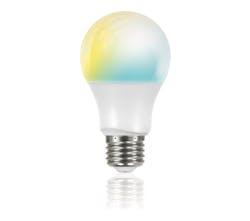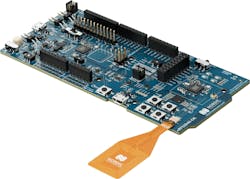Matter Underpins the Future of the Smart Home
This article is part of the TechXchanges: Powering the Smart Home with Matter and The Internet of Things (IoT).
What you’ll learn:
- The CSA’s Matter connectivity standard promises cohesive interoperability in the smart home.
- With over 300 companies behind it, Matter has great momentum in the marketplace.
- Crumbling “walled gardens” will bring consumers the benefits of OEM competition.
In the rapidly evolving smart-home landscape, the Matter connectivity standard emerges as a beacon of promise, offering consumers enhanced security, reliability, and seamless experiences. Developed by the Connectivity Standards Alliance (CSA) and backed by over 300 companies, Matter aims to unify smart-home devices, addressing interoperability challenges and simplifying the user experience.
One of the first smart-home devices, Honeywell’s 1969 Kitchen Computer, could make shopping lists, regulate temperature in the home, and control appliances. Despite its ingenuity, the machine didn’t sell, a situation often attributed to the fact it was promoted with the regrettable tagline: “If she can only cook as well as Honeywell can computer.”
In recent history, it hasn’t just been bad marketing holding back the smart-home sector. The promise of the fully integrated smart home has fallen well short of expectations.
Smart-home devices often fail to work together in a seamless and consistent way. Products built for one ecosystem don’t always work as planned in another. For example, a digital voice assistant from one manufacturer can encounter problems trying to configure and control smart lights or a home alarm system built by another.
Today’s homeowner is conditioned to expect “plug-and-play” performance from smart technology. However, what they currently get is products that don’t play nicely together. Frustrations commence early, even before buying the product. Prior to making a purchase, consumers must decipher which devices are compatible with which ecosystems, networks, and home assistants.
The consequences of this situation for the growth of the industry are clear. In 2021, the Consumer Technology Association (CTA) reported revenues in the smart-home sector were “flat.” Earlier, it declared the smart home was “not yet meeting its value proposition.”
The Matter Standard Brings Hope
But now there’s hope for cohesion in the fragmented smart-home sector. Matter is a new connectivity standard for the smart home developed by the Connectivity Standards Alliance. Matter works by building on top of the existing smart-home wireless connectivity technologies Thread and Wi-Fi (plus Bluetooth LE for commissioning), as well as the Ethernet wired protocol. It provides a unifying application layer that manufacturers can develop to, guaranteeing the compatibility and interoperability of their products.
For consumers, Matter promises simplicity. Instead of having to determine whether a Nest thermostat is compatible with Apple’s HomeKit, or if an Amazon Echo device can control a third-party smart window blind, buyers can simply seek out the Matter seal of approval on devices and be assured of interoperability. For manufacturers, the product development process is also streamlined with a single standard to which to build. Furthermore, Matter is IP-based, providing developers with a common and well-established foundation for communication.
But by far, Matter’s greatest attribute is the unprecedented consensus growing behind it. More than 300 companies have come together to develop Matter. This includes tech giants Amazon, Apple, and Google; large and small device manufacturers such as Eve, Leedarson (Fig. 1), Netatmo, Tridonic, and Yale; and wireless connectivity specialists like Nordic Semiconductor.
Any standard requires industry buy-in to succeed. The immense support behind Matter arguably gives it great momentum and high prospects of success.
Matter: The Game-Changing Connectivity Standard for Smart Homes
Various connectivity standards have emerged as the home-automation and smart-home industry has matured over the years, among them Z-Wave and Zigbee, while protocols such as Bluetooth and Wi-Fi have also found prominent roles. Each carved out a niche, yet none has successfully emerged as a default or primary standard for the smart home. This is reflected in the fragmentation that consumers experience at the end-device level.
Matter provides interoperability between existing smart-home connectivity protocols Wi-Fi, Thread, and Ethernet. Thread is a secure wireless mesh network specifically developed for the smart home, so it’s tuned for reliability and low latency. Thread works particularly well for lower-power devices such as sensors and door locks—the kind that must run for several years on small batteries and are categorized as sleepy end devices (SEDs).
In a typical smart-home setup, lower-power Matter devices would thus typically run across a Thread network, while devices with higher power and data-bandwidth needs will employ Wi-Fi. Matter supports the Thread, Wi-Fi, and Ethernet protocols for device-to-device communication, while Bluetooth LE is used for commissioning new devices to a network.
Together with the other Matter protocols, Wi-Fi can support Internet Protocol (IP). IP is a proven, widely adopted technology that’s essentially a network-layer communication standard for rapidly moving data across the internet. The advantages of this are clear—every supported device has its own IP address, and interoperability with the protocol makes it very easy to connect each smart-home product to the cloud. With such flexibility, smart-home applications can be very powerful and flexible.
That said, all wireless technologies feature tradeoffs. And because Wi-Fi is primarily designed to offer high throughput, it tends to be power-hungry. Wi-Fi isn’t the best technology for a battery-powered light switch, for example. It needs only to send small amounts of data to switch the associated light on and off, while using a compact battery that lasts for months. For this and similar applications, low-power wireless tech like Bluetooth LE, Thread, or Zigbee are better options.
Making Smart-Home Interoperability Painless
In addition to bringing interoperability to popular smart-home wireless technologies, Matter supports manufacturers to overcome other well-known smart-home pain points, such as the setup of new devices.
For instance, Amazon is working with leading brands to launch its “zero-touch” Frustration-Free Setup on its Matter-certified devices. This will enable consumers using Amazon’s ecosystems to simply take a device out of the box, plug it in, and wait for automatic connection to the smart-home network.
Another feature of the Matter spec, Multi-Admin, is also expected to make life simpler by enabling multiple smart-home ecosystems to easily control connected devices. This will be critical to liberating customers from the single-vendor “walled gardens” that many must endure today, allowing them to instead mix-and-match brands according to need and preference.
Meanwhile, chipmakers are optimizing silicon and software with the new standard in mind. For instance, Nordic’s customers are already actively developing Matter devices today using the company’s nRF52840 and nRF5340 SoCs, which support Thread and Bluetooth LE (Fig. 2).
Nordic Wi-Fi products, such as the nRF7001 and nRF7002, also support Matter. The company is a key player in the Matter ecosystem because of the central role its low-power chips play in the performance of smart-home solutions. It’s also active in promoting Matter’s capabilities.
Matter's Impact on Quality Assurance and Security in Smart Homes
The emergence of Matter also holds promise for sustained long-term improvements in the quality and security of smart-home products. With issues of interoperability resolved, device manufacturers can be expected to focus more on driving improvements in product quality and developing new features. Meanwhile, with Matter gaining force as the de facto smart-home standard, it will also likely become easier to enforce a baseline of standardized security expectations.
Once the standard is bedded down, Matter is expected to drive improvements in the quality of smart-home products. With the issues of interoperability resolved, device manufacturers will be free to focus on their core competencies, rather than on apps and architectures to support onboarding of devices to divergent networks and ecosystems.
As walled gardens crumble, customer lock-in will also fade away, meaning manufacturers will need to work harder to attract customers. Matter heralds a new dawn, and the smart home finally looks set for the masses to live the dream.
Read more articles in the TechXchanges: Powering the Smart Home with Matter and The Internet of Things (IoT).


